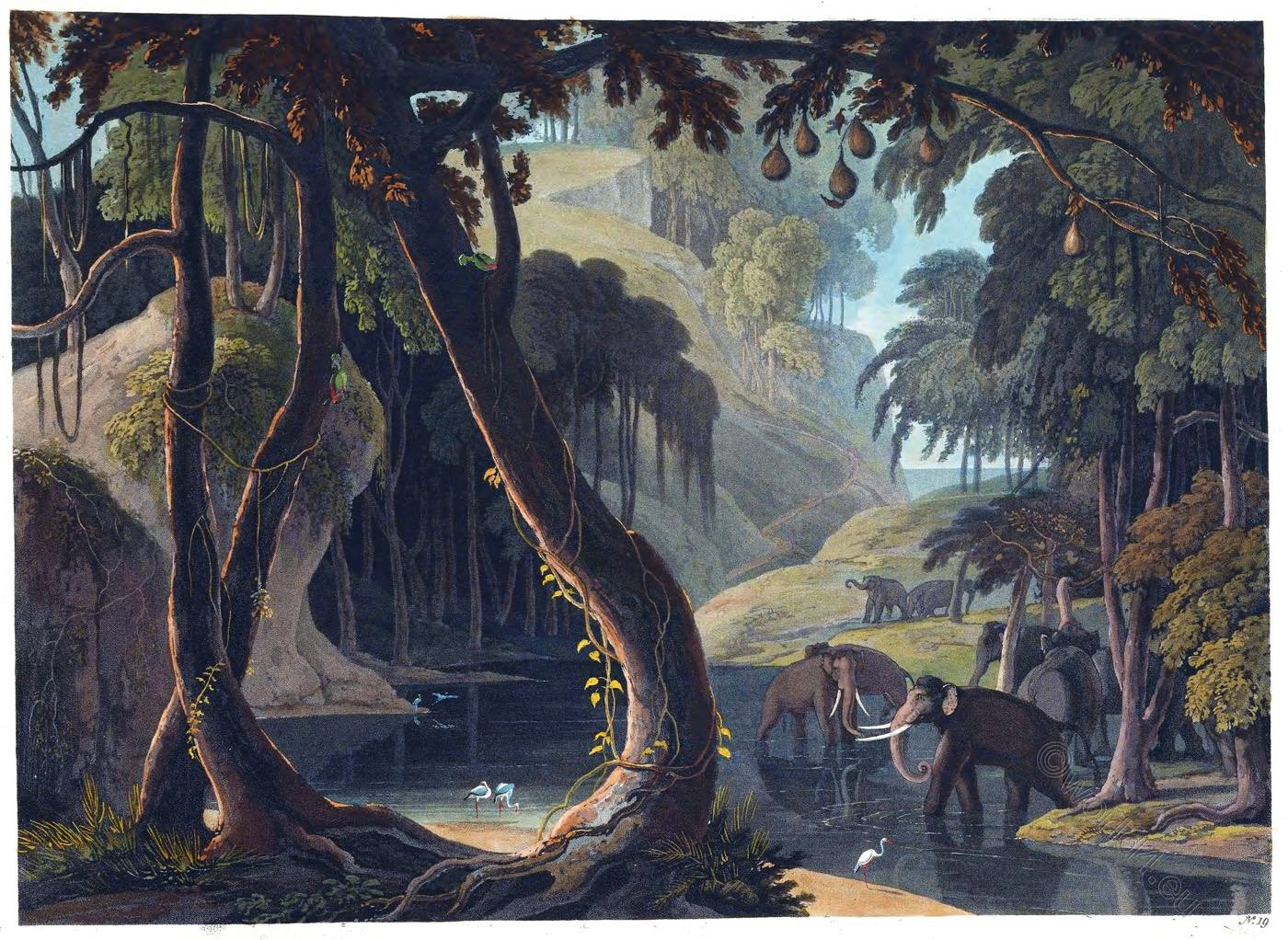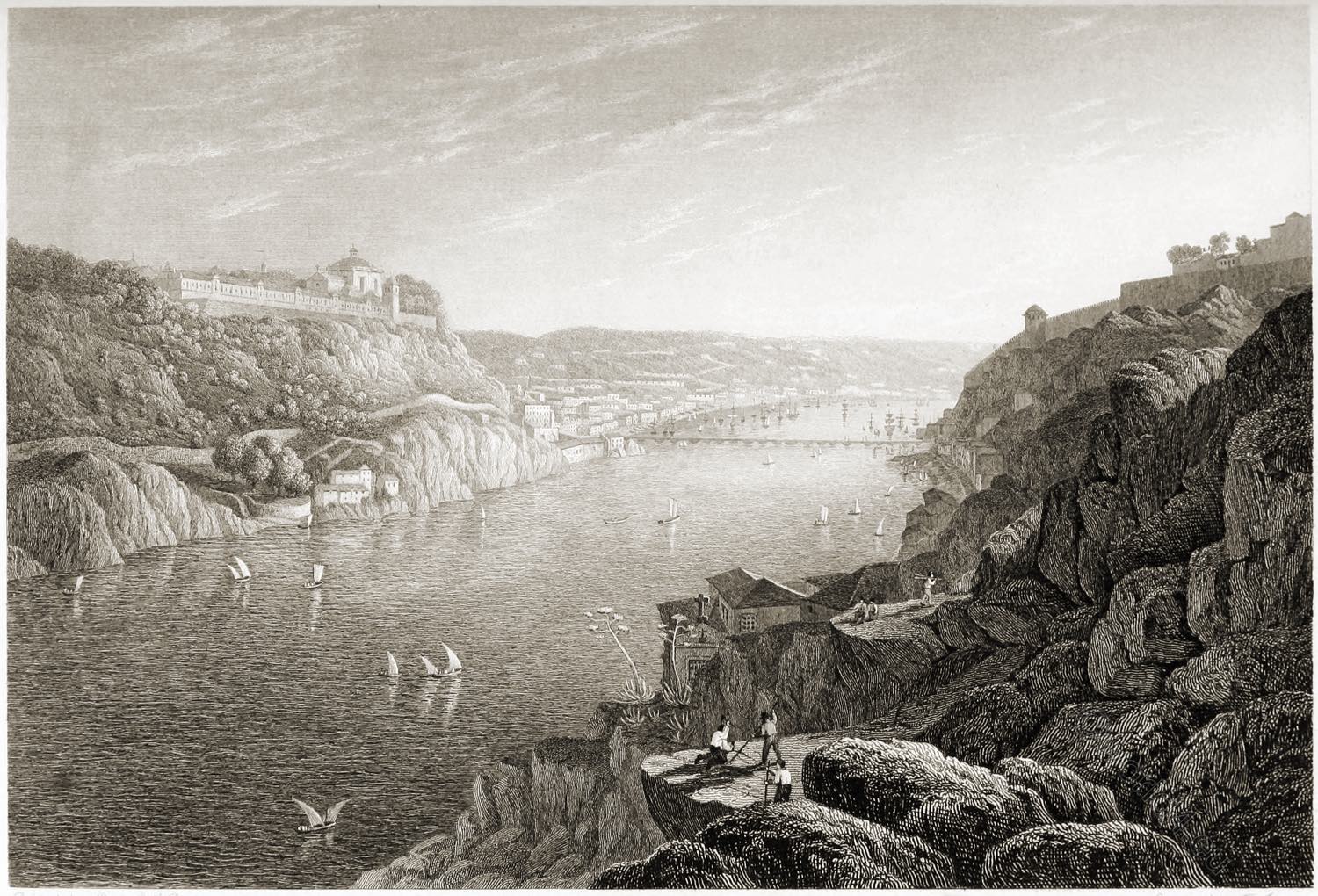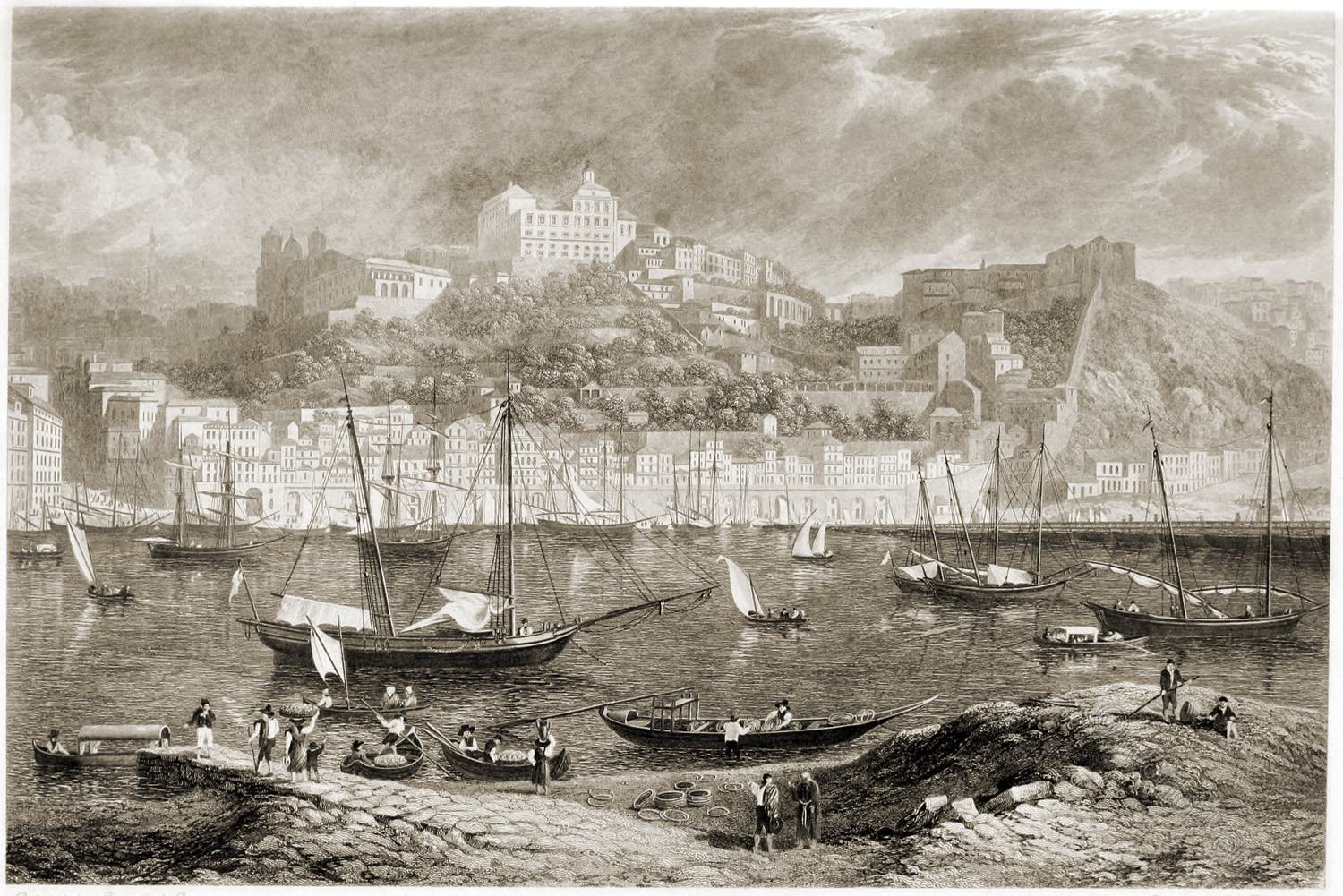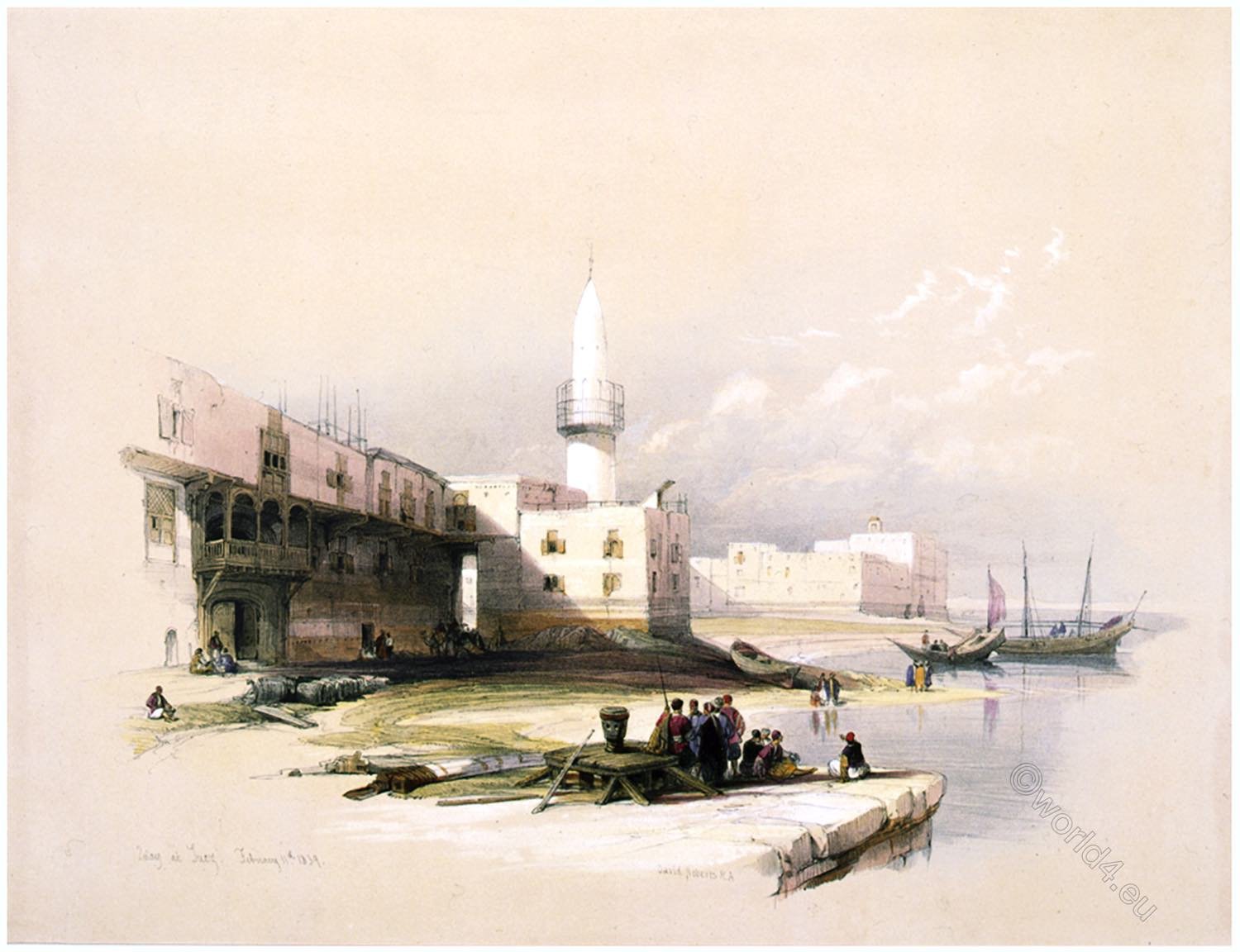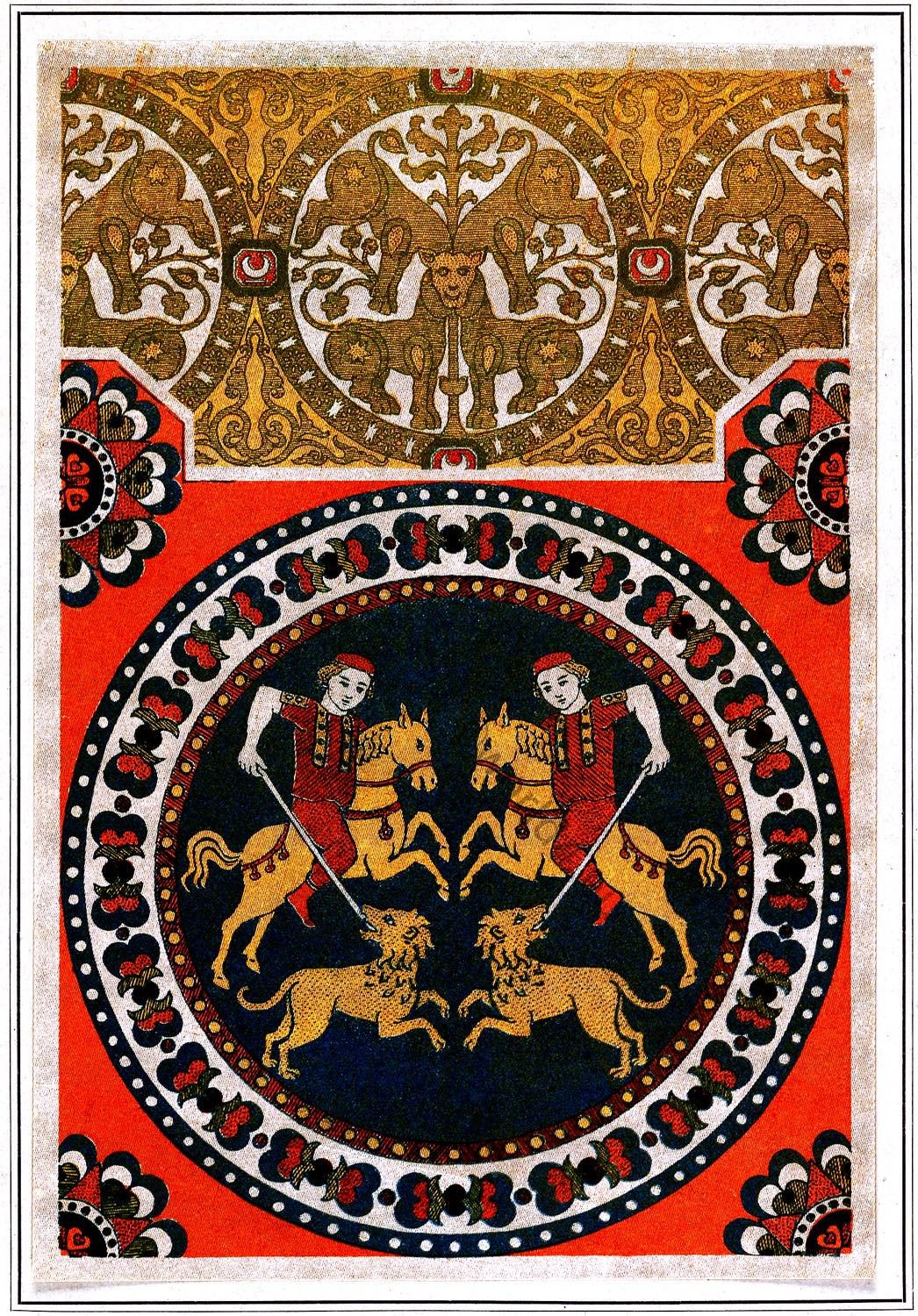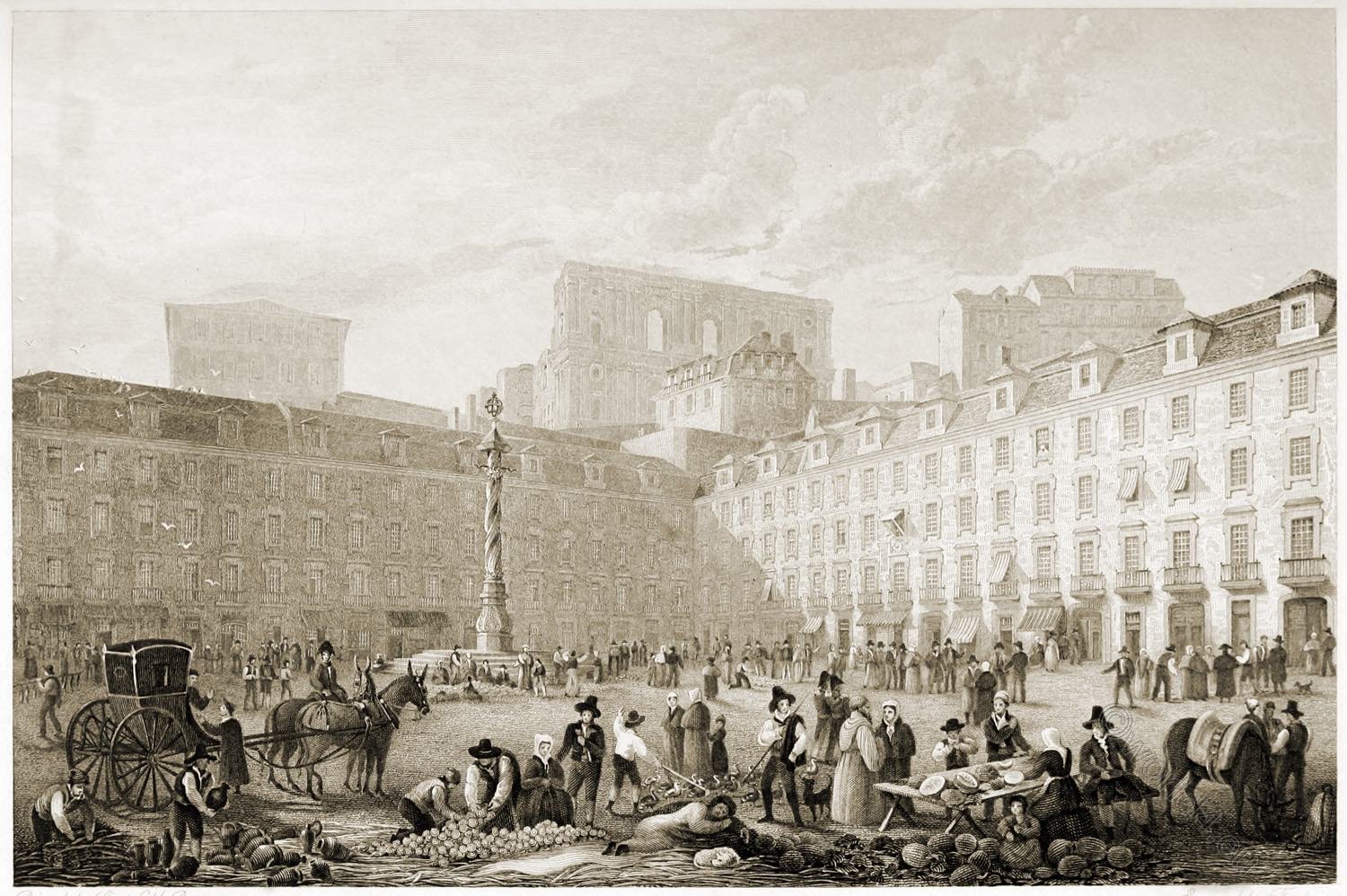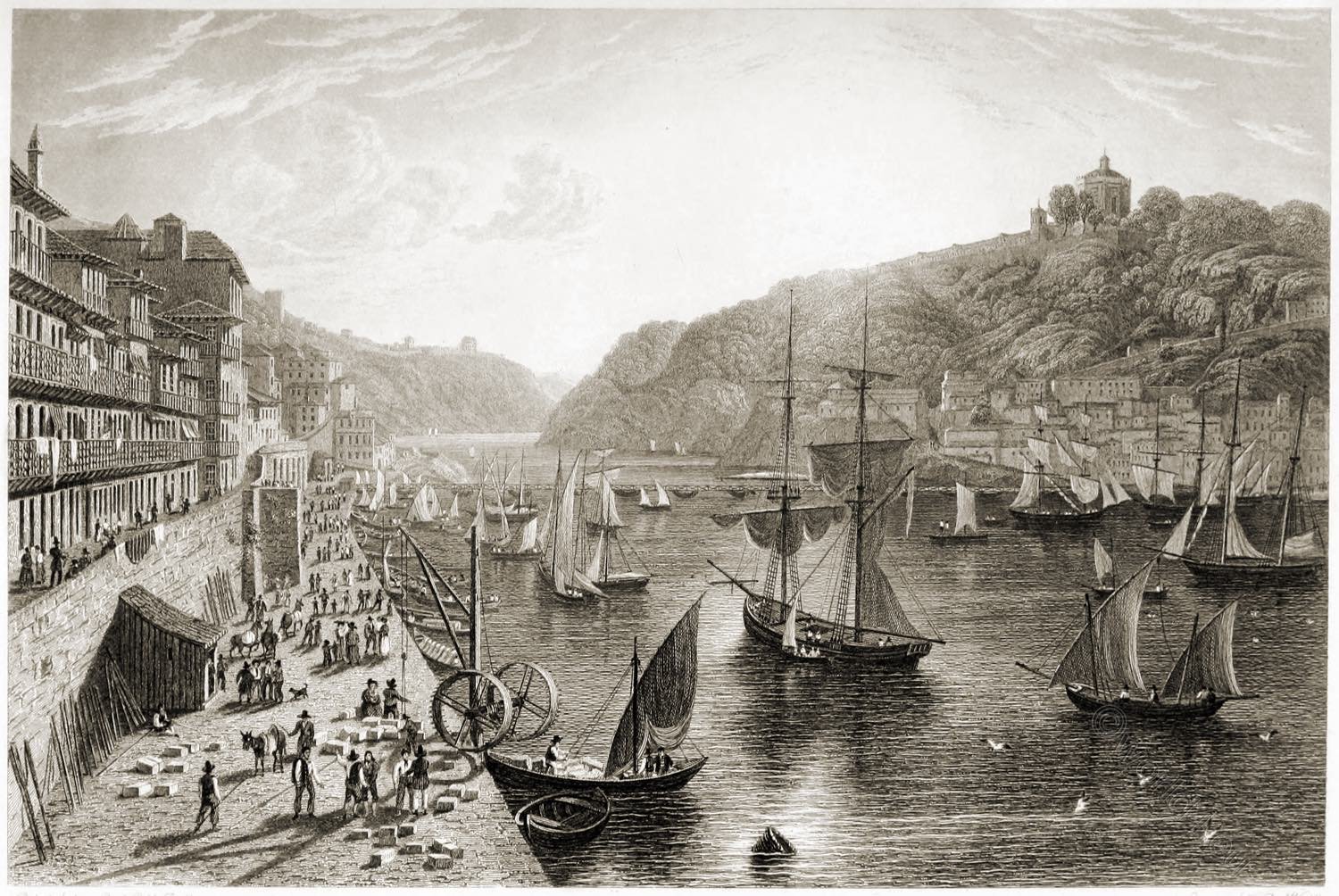
OPORTO, THE CUSTOM-HOUSE QUAY.
Returning to the north side of the Douro, and taking a station on the city wall, at the corner of the Ribuleira-street, a very interesting view of the river presents itself. The foreground is occupied by the busy scene of the Custom-house Quay.
The houses touching the old wall are of a very picturesque character, generally with large projecting roofs, well suited to so warm a climate. Part of Villa Nova is seen on the right.
The Serra Convent crowns the granite rock behind it. This convent, which occupies one of the finest situations in Europe, was founded in the year 1540, for monks of the order of St. Augustine. Its church is circular, and is said to have been built in imitation of that of St. Mary, called the Rotunda, at Rome.
On the summit of the distant hill stands the Seminario, a very long range of building, erected as a school for the clergy who are not intended for the monastic orders. The end of the building, only, is visible from this point.
It is worthy of some notice, from the circumstance of its being the point first gained possession of by the British troops, on the memorable occasion of the passage of the Douro.
The bridge of boats was first constructed in the year 1806; it was destroyed by the French, but re-established in 1815. It forms the chief line of communication between the province of Beira on the south and of the Douro e Minho on the north. It is an amusing and interesting scene for strangers to view the peasantry of Beira (perhaps the finest race of people in Portugal,) coming to market with the produce of their farms.
The bridge was the scene of dreadful slaughter at the time the city was given up to pillage by the French. Some of the boats forming it had been destroyed, and many of the wretched inhabitants crowding to the bridge, in hopes of escaping from the enemy’s sword, were urged on by the affrighted multitude into the rapid stream, and drowned.
Source: Select views of some of the principal cities of Europe by Robert Batty. London: Moon, Boys, and Graves, 1832.
Continuing
OPORTO.
The Mouth of the Douro from Massarellos.
Oporto, from the Monte D’Arabida.
Oporto, from the Quay of Villa Nova.
Oporto, from the Custom-House Quay.
Discover more from World4 Costume Culture History
Subscribe to get the latest posts sent to your email.

